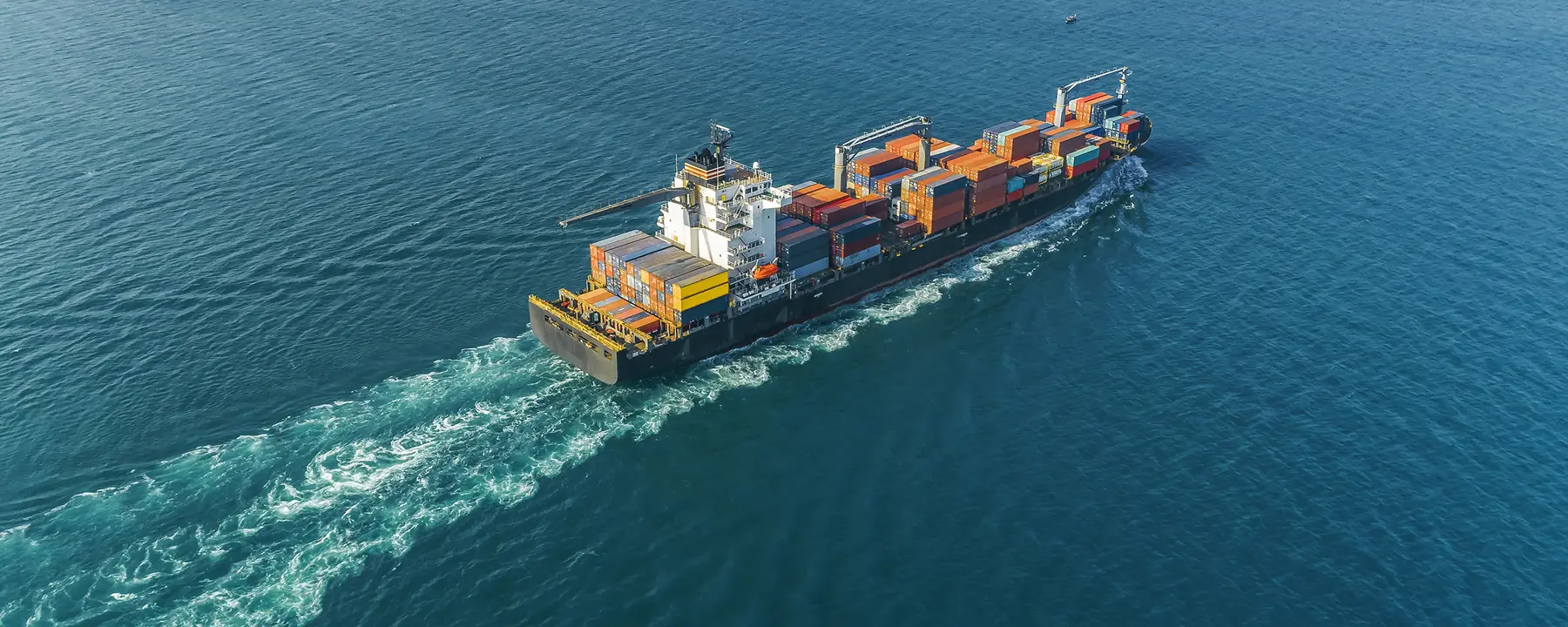The Future of Ammonia in Maritime Decarbonization
Objective
To evaluate the use of green ammonia, an emerging fuel with advantages over fossil fuels, in the shipping industry.
Approach
RTI Innovation Advisors analyzed data on shipowner preferences, scenario models, policies, tax incentives, and individual companies to determine the appetite for ammonia as a maritime fuel. We then evaluated the readiness of the maritime fuel supply / value chain for green ammonia to understand the existing barriers and opportunities for large scale deployment while considering potential unintended consequences.
Impact
Our insights confirmed our client’s market opportunity and are being incorporated into a broader go-to-market strategy, ultimately helping to spread emerging technologies that can enable the transition to a decarbonized world.
Global maritime shipping is a major greenhouse gas (GHG) emitter
Fossil fuels have been used for decades to power our world but are now well known to significantly contribute to global warming. While electric vehicles are revolutionizing our personal vehicles, similar solutions often don’t work for heavy duty transportation – including long range trucking, aviation, and shipping, with maritime shipping alone accounting for 2-3% of global CO2 emissions today.
The industry acknowledges that decarbonizing shipping can have a significant impact on reducing global warming. The International Maritime Organization (IMO) is targeting a 50% reduction of greenhouse gas emissions by 2050. Organizations like the First Movers Coalition and Cargo Owners for Zero Emission Vessels (CoZEV) are bringing businesses together to leverage their collective power to create market demands, while countries and organizations are coming together to provide thought leadership, create green shipping corridor testbeds, and share their lessons learned. Together, organizations and countries are accelerating the transition to decarbonized maritime shipping.
RTI is investigating new methodology for renewable green ammonia production and utilization
RTI’s Technology Acceleration and Commercialization team is demonstrating new methods for making green ammonia using 100% intermittent renewable energy and using green ammonia for applications, including long-duration energy storage, fuel, and fertilizer. With support from the U.S. Department of Energy Advanced Research Projects Agency–Energy, RTI is building a pilot-scale demonstration to not only showcase new technologies, but also connect technology developers to end-users to accelerate commercialization. RTI Innovation Advisors is supporting this effort by developing market studies and a technology-to-market plan, including opportunities to deploy green ammonia fuel for maritime shipping decarbonization.
Key insights RTI captured
Ammonia has great potential as an emerging sustainable fuel for maritime decarbonization
A new class of fuels – alternative sustainable fuels – has emerged as a potential replacement for traditional fossil fuels for heavy duty transportation. There are many fuels being considered for use in heavy duty transportation, including hydrogen, methanol, methane, and ammonia. While none of these are inherently sustainable today as they are all made from natural gas feedstocks, recent advancements in synthetic methods have decoupled their production from natural gas and use renewable energy.
Ammonia (NH3), in particular, stands out as a strong competitor for use in maritime shipping because of its higher energy density (less space is needed onboard for fuel), and its inherent lack of CO2 emissions emitted during combustion. Additionally, when ammonia is produced using renewable energy and water as a source of hydrogen (also known as green ammonia), there are no carbon emissions throughout the lifecycle of the fuel.
Combining this expertise on ammonia with primary and secondary research, we advised our client that there is significant interest in ammonia as a maritime shipping fuel. Surveyed shipping companies believe ammonia will be a key fuel in the future with scenario model projections estimating that anywhere from 200-700 metric tons per year (mT/yr) of low-carbon ammonia will be used globally by 2050, with 11-39% being used for shipping. Already, 15 mT/yr renewable ammonia production capacity has been announced, with new plants announcing the adaption of ammonia regularly (although not just for maritime shipping).
The shipping value chain can take advantage of existing knowledge to transition to green ammonia fuel
While there is a lot of interest and excitement about the potential for green ammonia as a maritime fuel, it is important to ground enthusiasm in a realistic understanding of the challenges in transitioning away from fossil fuels in maritime.
To enable our client to understand these challenges and what it will take to get to this future, we analyzed barriers and collected key insights for each point along the ammonia supply chain, which we have split into four stages:
- Low carbon ammonia production: Our analysis shows that shipping is likely to use green and/or blue ammonia and production is actively ramping up to meet emerging global demand. Comparing blue ammonia vs green ammonia, green ammonia refers to ammonia made from renewable energy and water, while blue refers to ammonia made from traditional fossil sources (such as coal or natural gas), but all the carbon emitted is captured and sequestered. The exact type (color) of ammonia used will depend on the location and availability.
- Distribution: Large amounts of grey (carbon intensive) ammonia are currently distributed globally for use as a fertilizer and feedstock for other commodities. Significantly more infrastructure (and investment) will be needed to enable use as a maritime fuel, but existing infrastructure, knowledge and technologies can be used to accelerate this deployment.
- Bunkering: Bunkering, also known as refueling cargo vessels, will require an overhaul of bunkering technologies, training, and infrastructure because ammonia is a toxic gas. However, pilot studies to safely guide this transition are currently underway.
- Ammonia-ready ships: The development of pure ammonia-powered combustion engines, dual fired engines, multi-fuel engines, and ammonia fuel cells is currently underway. These new ammonia-powered engines need to be commercialized and/or production scaled.
Maximizing the value of green ammonia as a sustainable fuel can only be done by keeping equity and safety in mind
Ammonia combustion is carbon-free, but can still have negative effects on the environment. Depending on exactly how it is combusted, it can potentially produce nitrogen oxides (NOX and N2O) which are potent greenhouse gases and can form particulate matter in the air. Particulate matter is well known to have acute adverse human health effects, including asthma and even cognition decline. Technologies to mitigate NOX pollution already exist and are widely practiced in automotive and chemical industries, and if leveraged correctly not only will maritime shipping be decarbonized, but the communities also living by ports can finally breathe cleaner air.
Considering a multi-fuel future is a key part of transition
Although there are clear advantages for ammonia as a maritime fuel, we found that today’s landscape is murky. Ships typically are on the water for ~25 years, meaning that the ships built today must be able to effectively function in a world of fossil fuels as well as one where most fuels are sustainable. All fuel options, including ammonia, are currently being scaled up to volumes needed for global shipping; however, there is no time to wait to see which fuel becomes dominant. Shipbuilders are under pressure to consider both the reality of today’s world as well as the forces pushing for sustainable options. This is causing many shipowners to plan for a multi-fuel future, one where ships need to run on at least 2 (maybe even 3 or 4) fuel families.
Despite the uncertainties and rapid changes in the emerging market, it is clear that ammonia will be a key solution to maritime decarbonization, reaching large scale implementation in the next 15-20 years.
Committing to a more sustainable future requires innovation
Our work across RTI International empowers our clients to make informed decisions on how best to approach maritime decarbonization across the value chain. RTI is helping to develop innovative, new technologies. We carefully compare the total lifecycle emissions and develop go-to-market strategies for emerging technologies that need to transition to a decarbonized world.
Learn more about RTI Innovation Advisors, Sustainable Energy Solutions, and RTI Center for Climate Solutions.





